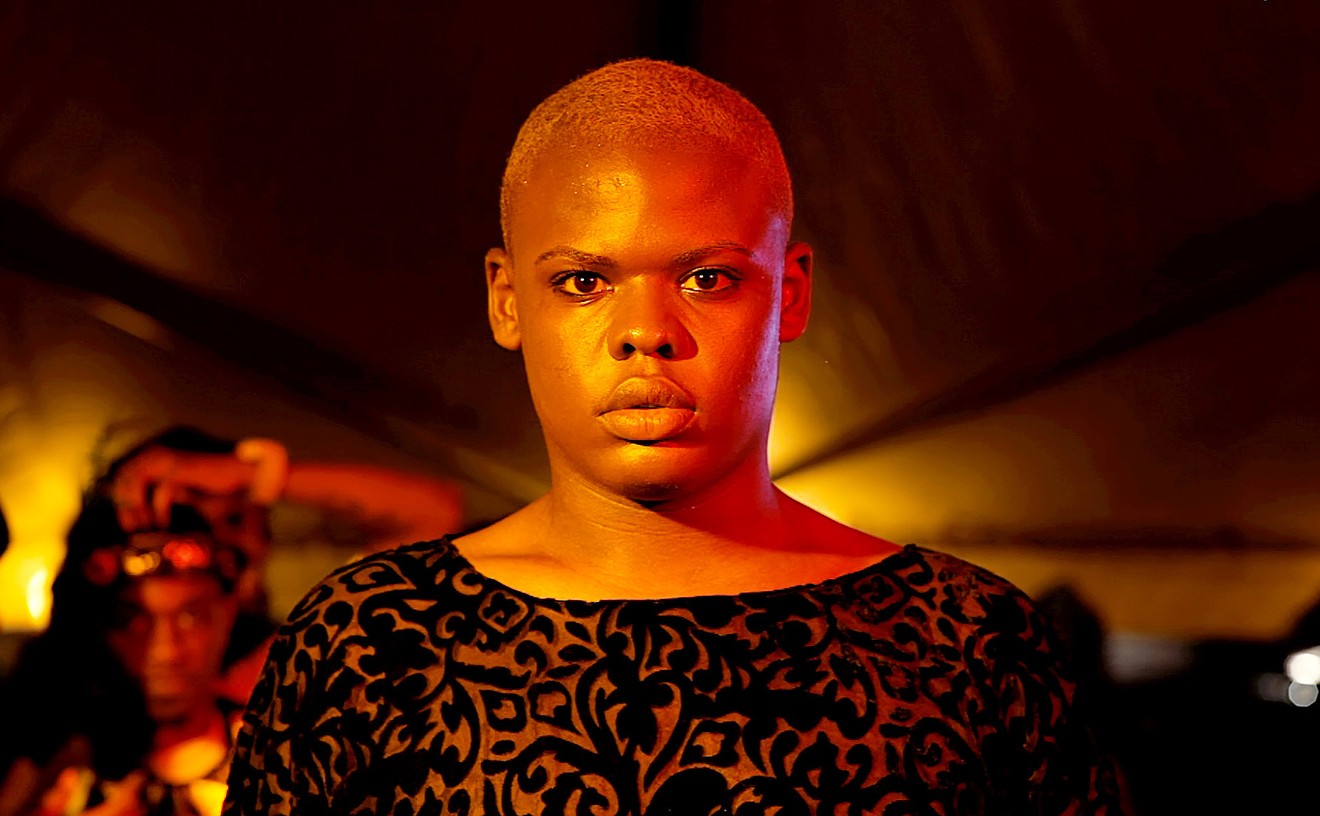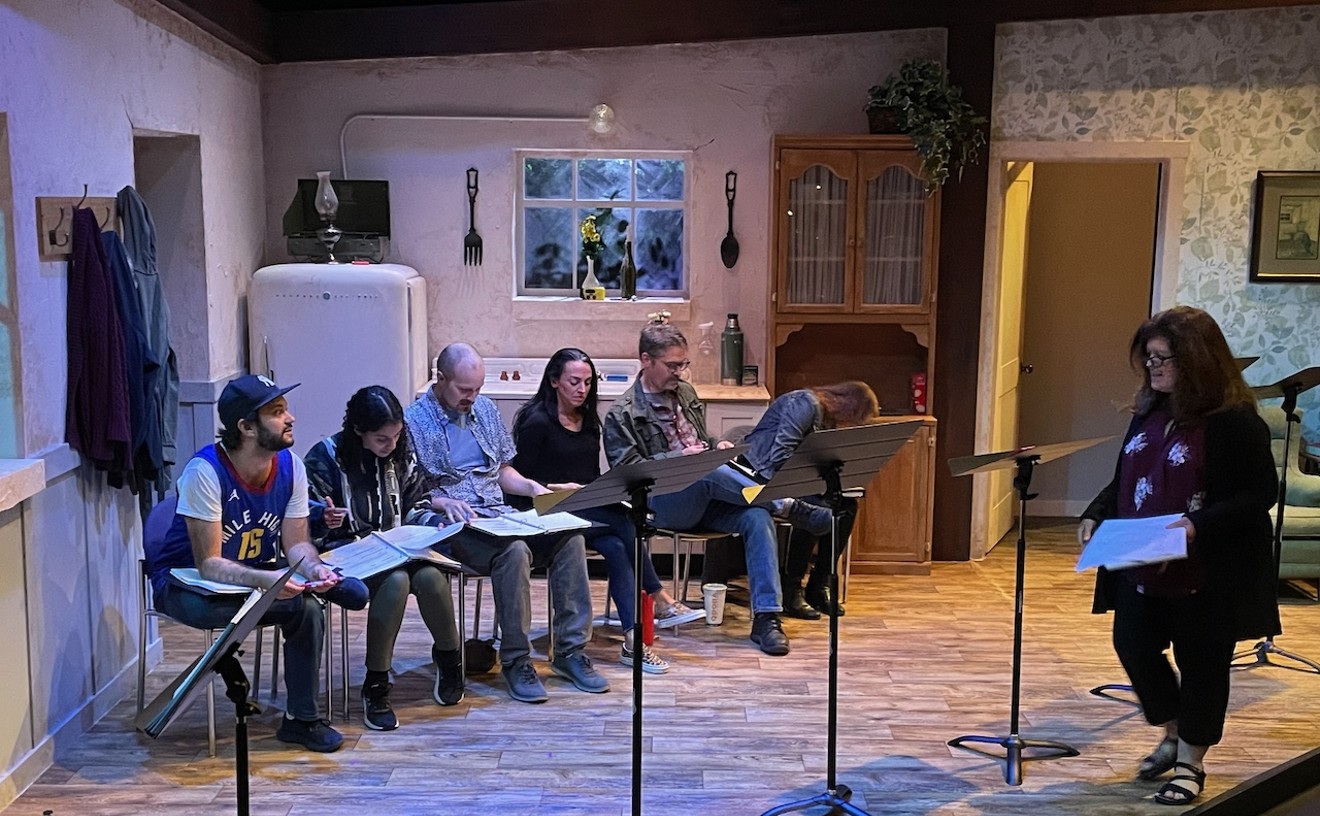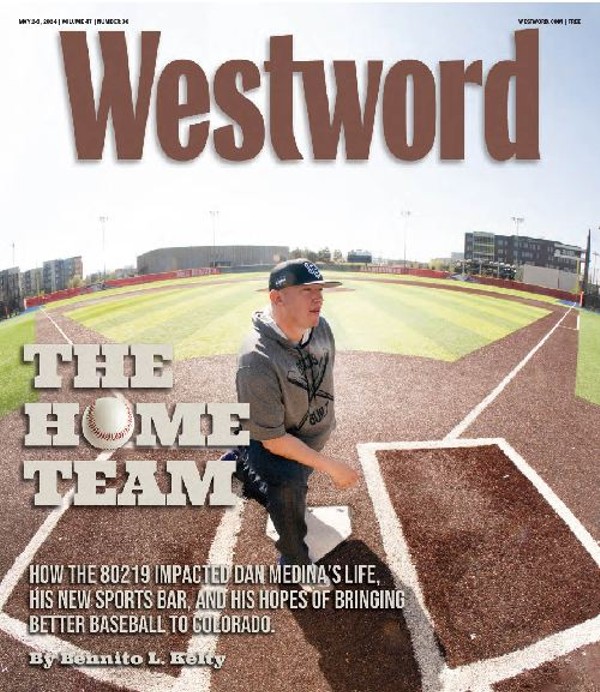Having written on the Denver art scene for many years, I've gained some perspective. The chief revelation I've had is that there's a relatively small number of individuals — perhaps a hundred or so — who substantially shape the scene through their outsized contributions. I bring this up because in the last weeks of December — the darkest time of the year — the local art world lost three of those people.
On December 18, Nancy B. Tieken, a writer, curator and donor, died after what has been described as a brief illness. Tieken was born into a wealthy family in Chicago in 1940, and later attended Radcliffe College and Harvard University, ultimately earning an MFA. She lived for many years in Boston and had a close relationship with the Institute of Contemporary Art there. Doubtless it was her upbringing combined with this long sojourn in New England that explained her crisp upper-crust accent, though in most ways she was very down to earth.
Tieken moved to Denver in 1991 to recuperate from a health crisis, and, bored and being an art historian, began to work at the Denver Art Museum while quietly funding projects more or less anonymously through her NBT Foundation. After noticing her presence at the unveilings of various NBT-funded pieces, I put two and two together, and she confirmed that NBT stands for Nancy Babson Tieken. It turns out that her maternal grandfather, Henry Babson, who made his fortune selling Victrolas around the world, left her a sizable legacy, with the proviso that she use the money to do good works (the call was left entirely up to her). She told me that she'd realized she did not have the means to make a major impact on the visual arts in her native Chicago or her adopted Boston — there was so much cultural material in those places already — but that she felt she could really make a difference in a smaller, younger city like Denver. And that is exactly what she did.
Over the next two decades, Tieken made gifts of art to the city and to the Denver Art Museum. The list is long, but standouts include Donald Lipski's "Yearling," James Turrell's "Trace Elements," Alexander Calder's "Snow Flurry," and the city's finest work of contemporary public art, Mark di Suvero's "Lao Tzu," in Acoma Plaza. Her role as a benefactor would have been enough to ensure her place in Denver's art history, but she was also an able curator who mounted several marvelous shows at the DAM, notably Abstract Expressionism From the Poindexter Collection and Wordworks by Roland Bernier. We are fortunate that Nancy Tieken chose to live partly in Denver over most of the past 25 years.
On December 23, Bill van Straaten died after a long battle with cancer. Born in Chicago in 1937 to a socially prominent family, he opened the van Straaten Gallery in the Windy City in 1969. But in 1988, he and his wife and partner, Jan van Straaten, established Riverhouse Editions in Steamboat Springs. A fine-art press, Riverhouse worked with some of the most famous artists in the world, including Alex Katz, Al Held, Eric Fischl, Sol LeWitt, Lynda Benglis and Fred Tomasselli, among a raft of others.
In 2008, the van Straatens bought the Sandy Carson Gallery — then the flagship of Santa Fe Drive — lock, stock and barrel, and for the next five years, until Bill's failing health forced them to close their doors, it was one of the top venues in our time zone. During those five years, gallery director William Bietty presented exhibits featuring international art stars from Riverhouse alongside important Colorado artists such as Homare Ikeda, Lorey Hobbs, Lorelei Schott, Quintin Gonzalez, Jeff Wenzel and Floyd Tunson.
Though presses and galleries come and go, it's necessary to point out that Riverhouse Editions and the van Straaten Gallery, both chiefly driven by the personality of Bill van Straaten, operated at the highest level by Colorado standards. It's clear that van Straaten made a lingering mark on our cultural life.
Finally, on December 29, many in the art world were rocked by the news that longtime Denver art dealer Robin Rule had died of cancer. Rule had kept her condition private, though anyone who saw her in the last year knew that something was wrong. But even as her health was failing, she was still at it, curating a John Fudge show at Pattern Shop this past fall. She also co-curated the Clark Richert solo still on view at Gildar Gallery.
Born in Kansas City in 1958, Rule attended Missouri State University before moving to Denver in 1980 to study graphic design at the Colorado Art Institute. Beginning as a freelance designer, she joined up with Cydney Payton's Cydney Payton Art Folio on 15th Street in 1987; in 1990, the partnership was formalized with the premiere of the newly dubbed Payton-Rule Gallery, which opened on Wazee Street with Robischon on one side and Sandy Carson on the other.
In 1992, Payton left the gallery to take the director's gig at the Boulder Museum of Contemporary Art, and Rule Gallery was the successor operation. With rents soaring in LoDo, Rule relocated in 1993 to an interior showroom at the Ice House — and was all but invisible as a result. Then she righted the ship, so to speak, by opening a spiffy-looking spot in an up-and-coming retail strip across from the Mayan Theatre on Broadway in 1996; she remained there until 2006, when she was forced out by a restoration of the building. She relocated just a block or two north on Broadway, in a smaller but still elegant space. In her last move, in 2011, Rule relocated to a tiny space in the Dry Ice Factory building in RiNo; it closed in 2013.
During the past two decades, I saw shows — dozens and dozens of them — at all of these locations; all were invariably curated, and their installations designed, by Rule herself. The exhibits set a high standard in terms of quality, and the elegant and perfect installations consistently created coherent wholes. As I think about what she did, I believe that Robin Rule should be counted as being among the top five exhibition organizers working in Denver during the past quarter-century. She put on one exquisite show after another, month after month, year after year, decade after decade.
Rule had a bubbly personality, a ready laugh and sparkling eyes, and she typically looked gorgeous, dressed to the nines in fashionable clothes. But the art business is notoriously difficult, and despite her eye, courage and judgment, she was often on the edge of financial ruin. This caused problems with some of the artists she represented. However, during Rule's heyday, the gallery promoted the work of the late Dale Chisman, Kim Dickey and Jeff Starr (all now at Robischon), as well as that of her most loyal friends, Clark Richert and Margaret Neumann, who remained with her to the end. She even exhibited the work of famous artists such as Carl Andre and Sandy Skoglund, both of whom I met because she introduced me to them.
I already miss Robin Rule's vision — as well as that of Nancy Tieken and Bill van Straaten. I'm sure the rest of the art world feels the same way.










